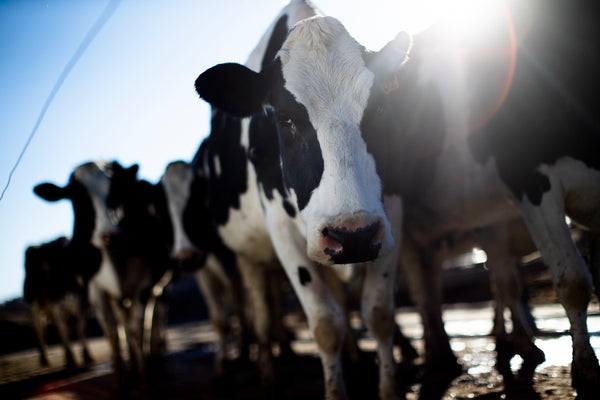Bird Flu Is Spreading in Cows. Here’s What That Means for Milk
H5N1 influenza virus particles have been detected in commercially sold milk, but it’s not clear how the virus is spreading in cattle or whether their milk could infect humans
U.S. dairy cows walk back to the barn after milking.
Derek Davis/Portland Press Herald via Getty Images
The outbreak of avian influenza in US dairy cattle shows no signs of slowing. Over the past three weeks, the number of states where cows infected with bird flu have been detected has risen from six to eight. A preprint1 posted on 16 April reported the discovery of the virus in raw milk from infected cows, and US federal authorities said on Wednesday that the virus had been found in lung tissue collected from a seemingly healthy cow.
Also on Wednesday, US officials confirmed at a media briefing that genomic material from the H5N1 strain, which is causing the outbreak, had been detected in milk sold in shops.
Detection of viral particles in milk sold to consumers suggests that avian flu in cows could “be more widespread than initially thought”, says food scientist Diego Diel at Cornell University in Ithaca, New York. “Increased surveillance and testing in dairies should be an important part of control measures going forward.” Nature looks at the implications for human health and the future of the outbreak.
On supporting science journalism
If you’re enjoying this article, consider supporting our award-winning journalism by subscribing. By purchasing a subscription you are helping to ensure the future of impactful stories about the discoveries and ideas shaping our world today.
What does it mean that H5N1 is in retail milk?
It’s still unclear how many milk samples the FDA has tested or where the samples were collected. The agency said that it would release more information in the coming days and weeks.
After it leaves the farm and before it hits the shelves, milk is pasteurized to…
Read the full article here







